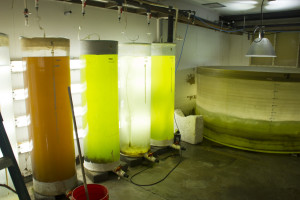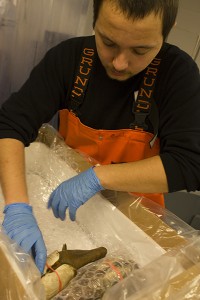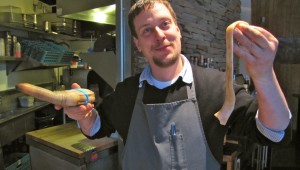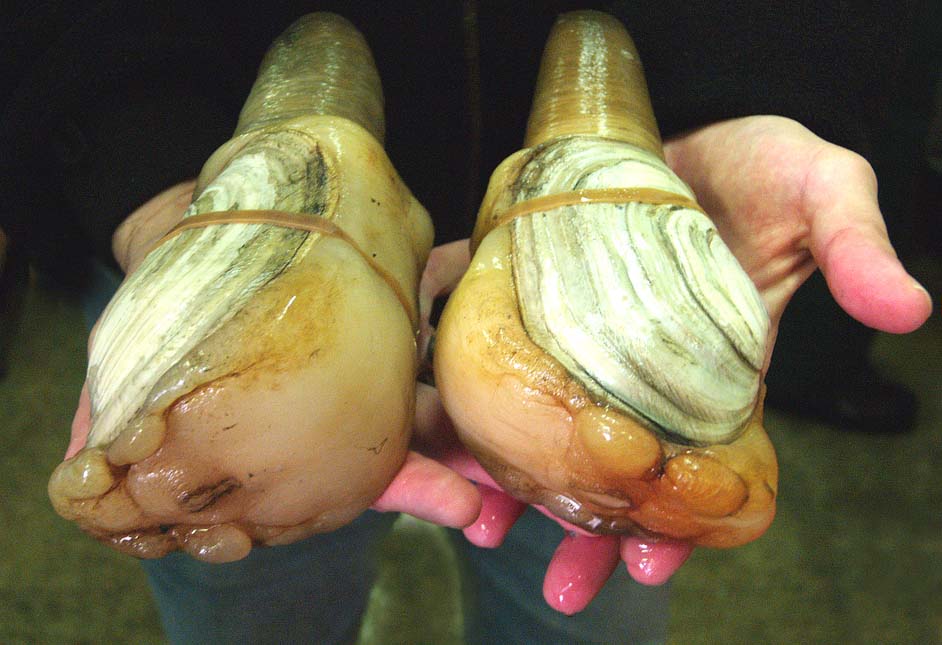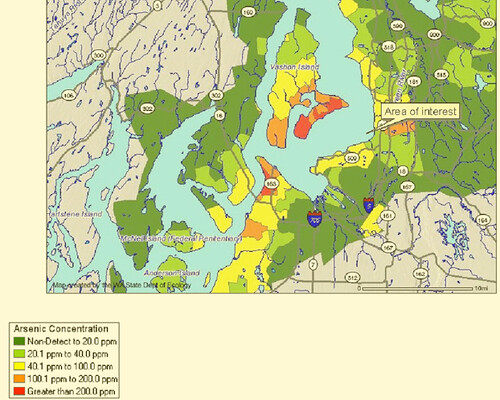Jackleen De La Harpe, Indian Country Today Media Network
Jamestown S’Klallam Tribe crabbers fish for Dungeness with a seductive perfume—the smelliest squid, herring and oily fish—bait that lures crab into the pot for harvest. Dungeness, a sweet, meaty crab, is an important commercial fishery in the Pacific Northwest and a central fishery for the tribe, located on Washington’s Olympic Peninsula. Fished by size, sex and season—no less than 6.25 inches, no females, and no take during the molt cycle—this management strategy contributes to a successful, sustainable crab fishery. This year, a two-day Dungeness opening in Puget Sound netted more than 150,000 pounds of crab in 48 hours.
Cliff Prince, Jamestown S’Klallam Tribe, understands the great value of the fishery, especially for his family. “My son, David, has been on my boat since he was 8 years old,” he said. “Being able to spend summers with him is a big thing for our family.” This may be the last summer that David Prince, Jamestown S’Klallam Tribe, fishes with his father. Prince, 22, a junior at Stanford, is majoring in American Studies and plans to apply to graduate school after he graduates.
“Most of the money I’ve ever had came from crabbing,” he said. “I learned about work from going out with my dad, getting up at 4 in the morning and getting home at 7 at night. It’s the kind of thing that’s shaped a lot of my life. It’s a few thousand hours I wouldn’t have had otherwise (with my dad), being out there every day.” For the tribe, he said, Dungeness crab is “life, meaning everything. It’s what you’ve got, it’s that and fish, and it’s why we’re still here. Going out on the water to get fish and crab, it’s what sustained the tribe back as far as anyone can remember.”
2. Scavenging the Spineless, Slippery ‘Slug-Like’ Sea Cucumber
Fishermen from Lummi Nation harvest a typical array of Northwest fish and shellfish — Dungeness crab, halibut, salmon, shrimp — and a relatively new fishery, the “exotic” sea cucumber, a spineless, slippery “slug-like” creature that divers pull from the rocks and sea floor. Phillip Jefferson, 43, Lummi Nation, began diving for cucumbers in 2001 when the fishery was just getting underway. Now he helps train some of the 50 people from Lummi who earn their living underwater—serious, difficult work that requires certification and strict adherence to safety procedures. Besides the cold Pacific waters, at near-constant temperatures of 45-50 degrees F, strong currents can tire divers while sharks or sea lions, which can weigh as much as a ton, may startle and alarm divers with limited underwater sight. Equipped with surface-supplied air, full face masks or helmets and mesh bags, fishermen may dive to depths of 60-90 feet to harvest the reddish-brown “ocean detritivore,” which is sold in Seattle and to markets in China, the Philippines, and Japan.
Sea cucumber (Alaska Fisheries Science Center, National Oceanographic and Atmospheric Administration; Underwater Photographer Kevin Lee.)
Jefferson’s diving supports his family and allowed him to buy his own boat, named for his daughter, Keesha Rae, 14. On a good day, he said, it’s possible to bag 300 pounds of cucumbers. Dive fisheries, including the sea cucumber, make up a small and important part of the Lummi Nation fisheries, grossing an estimated copy.2 million in 2011. Working underwater can be straightforward, he said, “when it’s really bright, you can see a long way.” At other times, it is complicated and even mysterious “when the tide is moving hard and the current creates a lot of debris, like snow. You can’t use a light and can’t do without one. Divers call it a whiteout.” He’s seen cucumbers curl up like corkscrews to avoid predators and roll away with the tide or stand on their tails like a cobra about to strike, perhaps to spawn or elude a predator, which could well be Jefferson himself. With a rapid reproduction cycle and continued management, Jefferson believes he’ll be able to dive for this thriving fishery well into the future.
3. The Spiritual Experience of Digging for Mollusks
Geoduck, in the Salish language, means dig deep. Northwest locals understand geoduck (pronounced gooey duk) to mean really big clam, which weighs, on average, two to three pounds. Dig deep may also refer to wallets—geoduck is found infrequently in U.S. restaurants because it is so expensive—most is shipped to China where, after it has been brokered, can cost as much as copy50 per pound on the plate. This high market value is one reason that makes it one of the most closely regulated fisheries in the U.S. and Canada.
Five-year-old Elona Bowyer of Gig Harbor, a bay on Puget Sound, holds a large geoduck. (AP Photo/Peter Haley)
The Puyallup Tribe of Indians and the State of Washington carefully co-manage the geoduck fishery. At the end of a diving day and before a boat is allowed to leave a fishing tract, the catch must be weighed to account for the harvest. Most of edible part of the geoduck is the siphon, which looks like an elephant trunk and can stretch from three or four feet under the sediment stopping just at the marine floor to feed. Divers find the hidden clam by looking for a bit of siphon sticking above the sediment or a cryptic discoloration in the sand. With a shot of high-pressure water, the diver exposes the siphon and catches the clam by the “neck” before it retracts deeper below the surface.
Marvin Johnson, 29, Puyallup Tribe of Indians, a certified commercial diver, has been a geoducker for the last three years. This work is his calling, his talent and a blessing, he said, because it allows him to support his family. But it is not just the economics—digging has made him spiritually and physically stronger.
“It’s a spiritual experience to be out on the water,” he said, “it’s especially spiritual to go underneath the water. Our ancestors didn’t have the ability to put on a dry suit, it’s something that it new to us—the crabs walking with you, fish swimming around you, you can see God’s beauty down there.”
4. Keeping Pace With the Speedy Razor Clams
Skill and speed—that’s the combination of a successful Quinault Indian Nation razor clam digger. Razor clams, identified by thin, delicate bronze shells, are fast; they can dig at a rate of two feet in less than a minute. Diggers look for telltale hole in the sand, jam a shovel down, and plunge a hand behind the blade to stop the clam from getting away. The Quinaults process the sweet clam meat at the tribally owned processor, Quinault Pride Seafoods, and sell the clams primarily in the Northwest for chowder or steaks. In the U.S., other than Alaska, only the Quinault Indian Nation commercially harvests razor clams for human consumption.
When scouring the beach for razor clams, diggers look for a dimple in the sand left by the clam’s siphon; then they dig as fast as possible.
Gerald Ellis, Quinault Indian Nation, starting digging when he was six years old and remembers traveling with his family to Celilo Falls on the Columbia River to trade tubs of fresh-dug razor clams for spring Chinook salmon. Meeting at Celilo was a way of life for his family as it was for so many coastal and river tribes in the Northwest, who traveled to Celilo Falls to trade, fish and reconnect. That tradition of thousands of years ended in 1957 when the roaring falls were submerged with the completion of the Dalles Dam.
“Celilo Falls was probably the biggest gathering place for all tribes in the nation, there was such an abundance of fish,” Ellis said. At 68, Ellis no longer digs commercially but takes his grandchildren with him to harvest his 100-clam limit, carrying on traditions that have existed from the beginning of time, and creating his own. He smokes and cans razor clams with jalapenos, an “awesome” combination that he doesn’t sell but trades and shares with family and friends.
Read more at https://indiancountrytodaymedianetwork.com/2013/07/07/4-traditional-ways-natives-harvest-unique-seafood-northwest-150307
